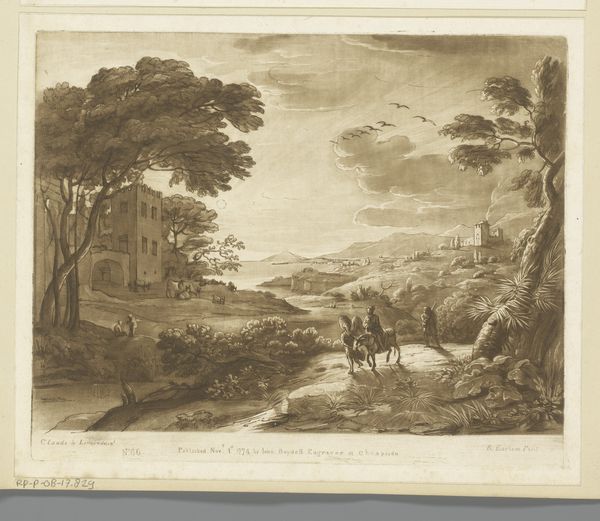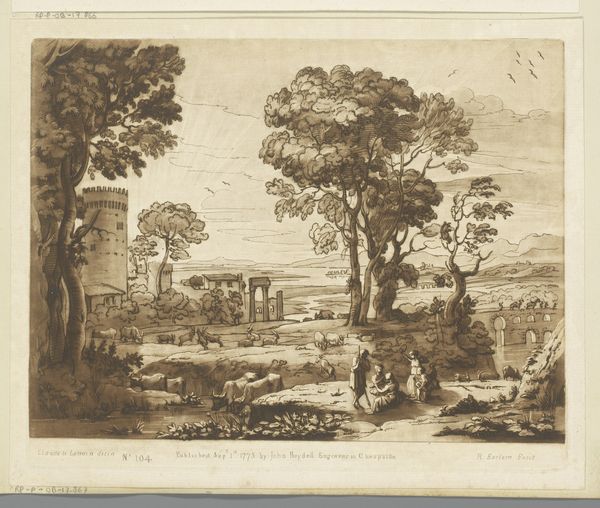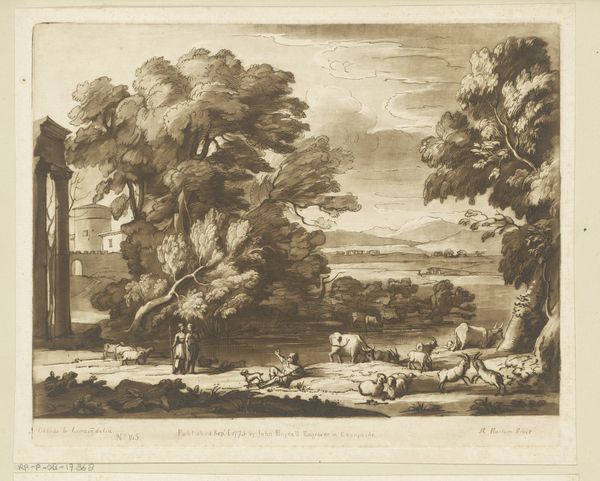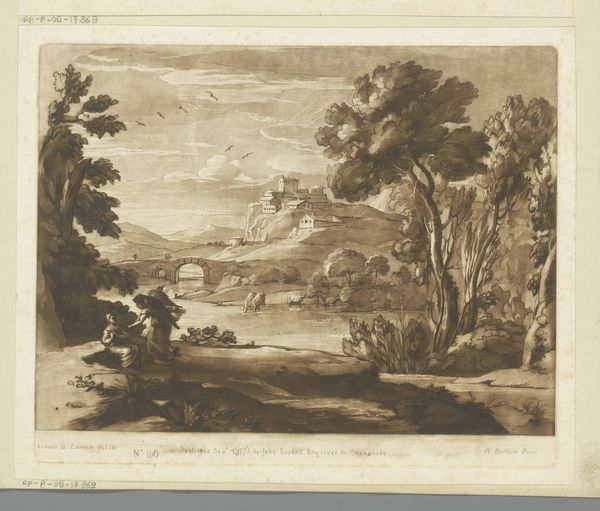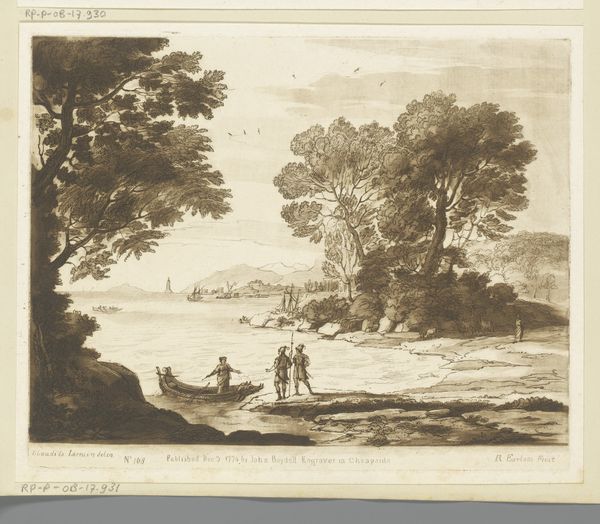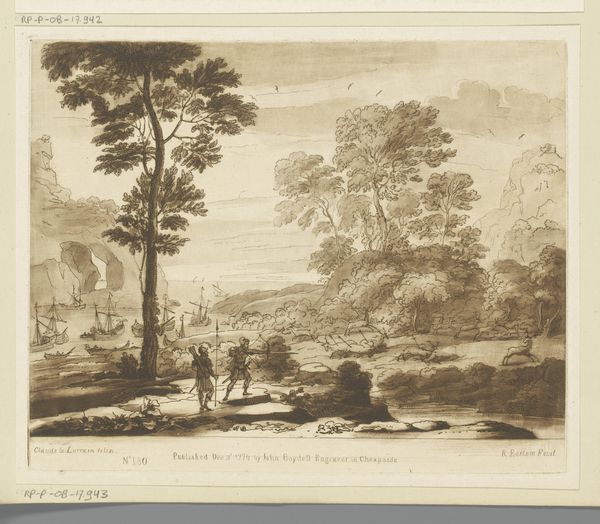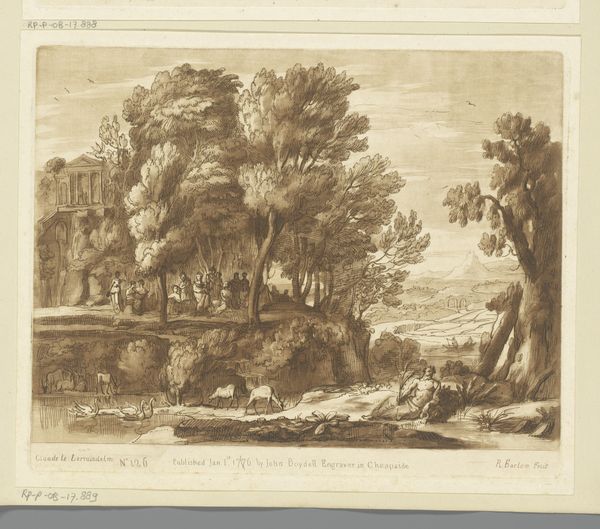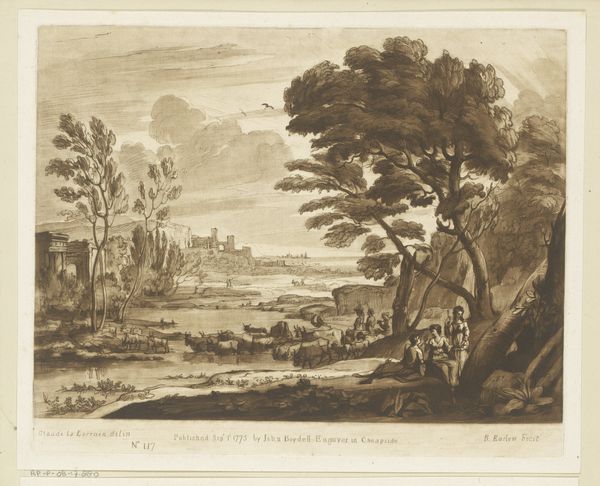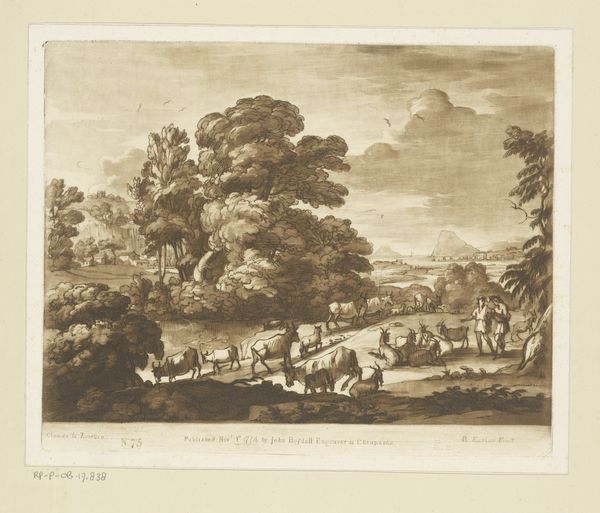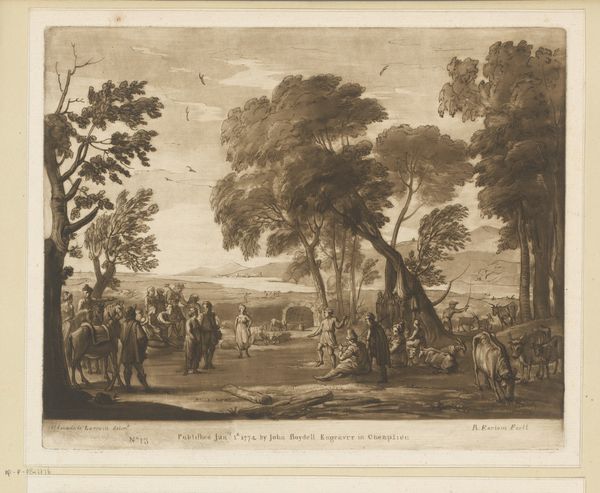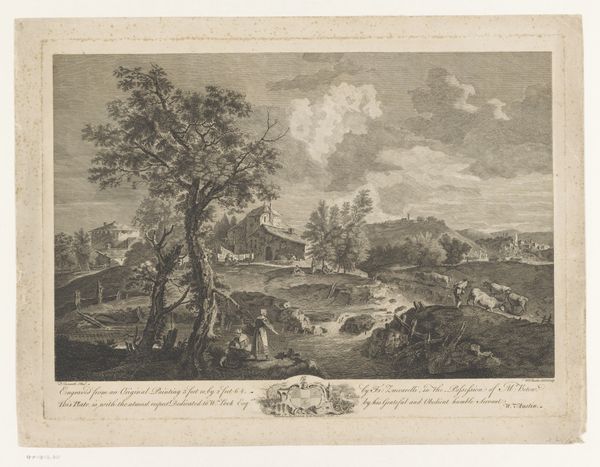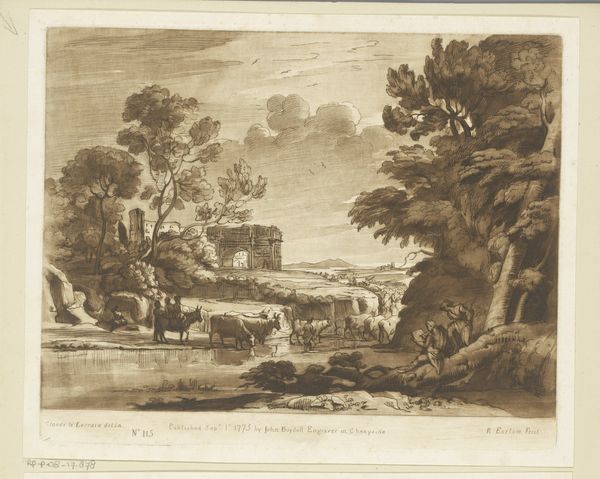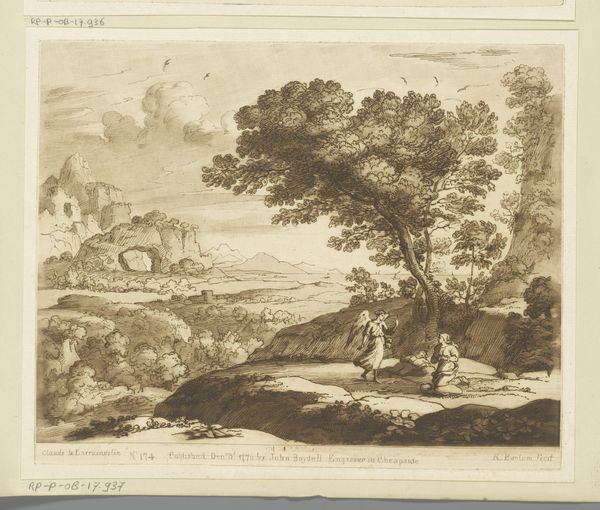
Landschap met fluitspelende herder en herderin die waterkan vult Possibly 1775 - 1779
0:00
0:00
richardearlom
Rijksmuseum
Dimensions: height 208 mm, width 258 mm
Copyright: Rijks Museum: Open Domain
Richard Earlom made this print called "Landscape with a Shepherd Playing the Flute and a Shepherdess Filling a Water Jug" in 1778. It presents a picturesque scene of rural life, filtered through the artistic conventions of its time. The image's visual codes, cultural references, and historical associations create meaning. Made in England, it reflects a fascination with pastoral themes and the idealization of country life that prevailed among the British elite in the 18th century. This nostalgia for the countryside often served as a commentary on the social structures of the time. It critiqued the growth of cities and celebrated an idealized vision of a simpler, pre-industrial existence. The institutions of art, such as galleries and printmakers like John Boydell, played a crucial role in popularizing these images. Understanding this artwork requires historical research into the social and cultural context in which it was made. By considering these factors, we can better grasp the meaning of art as something contingent on its time and place.
Comments
No comments
Be the first to comment and join the conversation on the ultimate creative platform.
